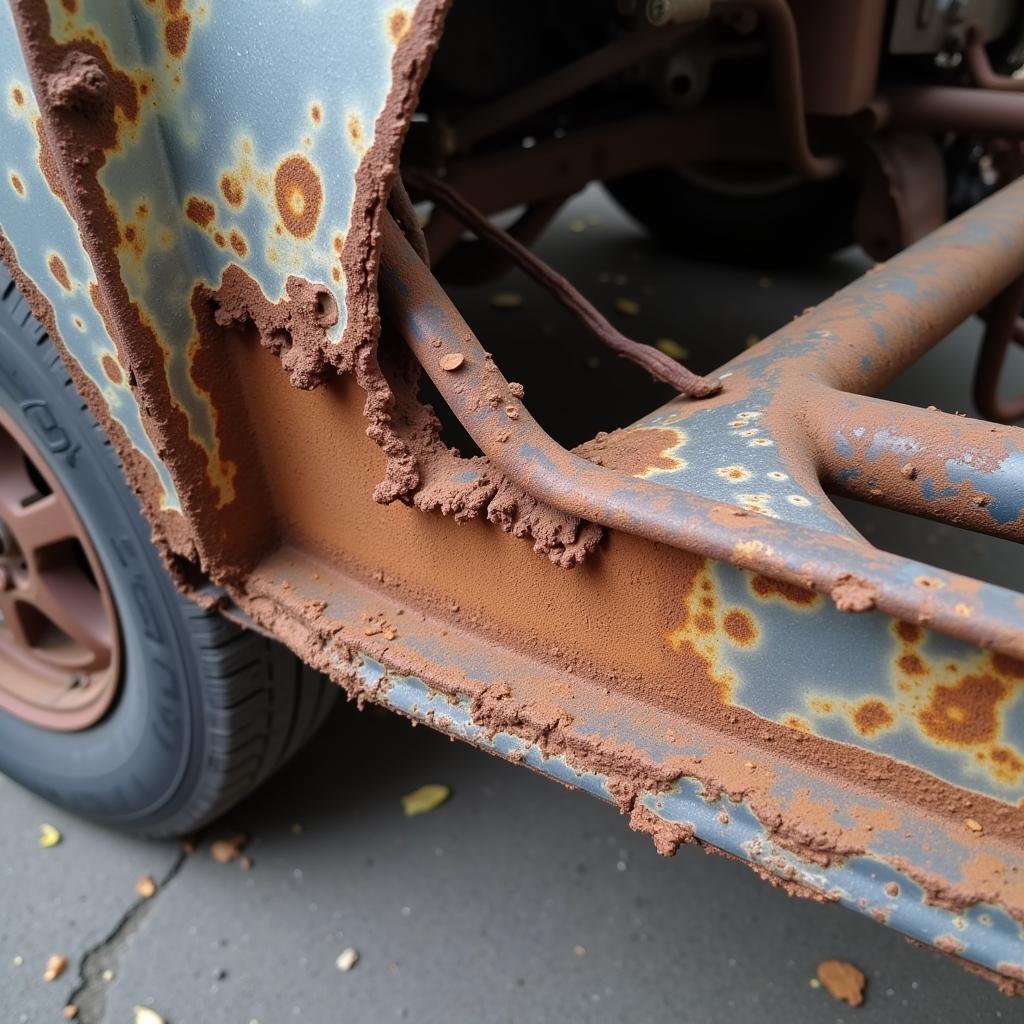High RPM can be a real headache, leaving you stranded on the side of the road or constantly worried about your engine. This article will dive deep into the common causes of high RPM, helping you diagnose the problem and get your car back to running smoothly. We’ll explore everything from simple fixes you can do yourself to more complex issues that may require a professional mechanic.
Understanding High RPM
High RPM, or revolutions per minute, refers to how fast your engine’s crankshaft is turning. While higher RPMs are necessary for acceleration and highway driving, persistently high RPM while idling or at low speeds indicates a problem. Ignoring this issue can lead to decreased fuel efficiency, increased engine wear, and even catastrophic engine failure.
Common Causes of High RPM
Vacuum Leaks
A vacuum leak disrupts the air-fuel mixture, causing the engine to rev higher to compensate. These leaks can occur in various places, such as the intake manifold gasket, vacuum hoses, and the PCV valve.
Throttle Position Sensor (TPS) Malfunction
The TPS tells your car’s computer how much fuel to inject based on how far the accelerator pedal is pressed. A faulty TPS can send incorrect signals, leading to high RPM even when the accelerator is not engaged.
Idle Air Control Valve (IAC) Issues
The IAC regulates the amount of air bypassing the throttle plate when the engine is idling. A stuck or malfunctioning IAC valve can cause the engine to idle at a higher RPM than normal.
Transmission Problems
While less common, problems with the transmission, especially in automatic vehicles, can also cause high RPM. A slipping transmission can cause the engine to rev higher to maintain speed.
Faulty Sensors
Other sensors, such as the Mass Airflow Sensor (MAF) or the Oxygen Sensor, can also contribute to high RPM issues. These sensors provide information to the car’s computer, and incorrect readings can lead to improper fuel delivery and high RPM.
How to Diagnose and Fix High RPM
-
Check for Vacuum Leaks: Inspect vacuum hoses for cracks or disconnections. Use a carburetor cleaner to spray around potential leak areas while the engine is running. A change in engine speed indicates a leak.
-
Inspect the TPS: Use a multimeter to test the TPS voltage. Compare your readings with the manufacturer’s specifications.
-
Clean the IAC Valve: Remove the IAC valve and clean it with throttle body cleaner.
-
Check Transmission Fluid: Ensure the transmission fluid is at the correct level and is not burnt or discolored.
-
Scan for Trouble Codes: Use an OBD-II scanner to check for diagnostic trouble codes that can pinpoint the source of the problem.
“Ignoring seemingly minor issues like high RPM can lead to major engine problems down the road. Regular maintenance and timely repairs are key to keeping your car running smoothly,” says John Miller, a certified automotive technician with over 20 years of experience.
When to See a Mechanic
If you’re unable to diagnose or fix the high RPM issue yourself, it’s crucial to consult a qualified mechanic. They have the expertise and specialized tools to accurately diagnose and repair complex problems.
“Don’t hesitate to seek professional help if you’re unsure about anything. A skilled mechanic can save you time, money, and potential further damage to your vehicle,” adds Sarah Johnson, a seasoned automotive engineer.
Conclusion
High RPM can be a symptom of several underlying issues. By understanding the common causes and following the diagnostic steps outlined in this article, you can often identify and fix the problem. However, if you’re unsure or the issue persists, seeking professional help is always the best course of action. Remember, addressing high RPM promptly can prevent further damage and keep your car running at its best. Need help? Connect with us at AutoTipPro at +1 (641) 206-8880 or visit our office at 500 N St Mary’s St, San Antonio, TX 78205, United States. We’re here to help!





Leave a Reply